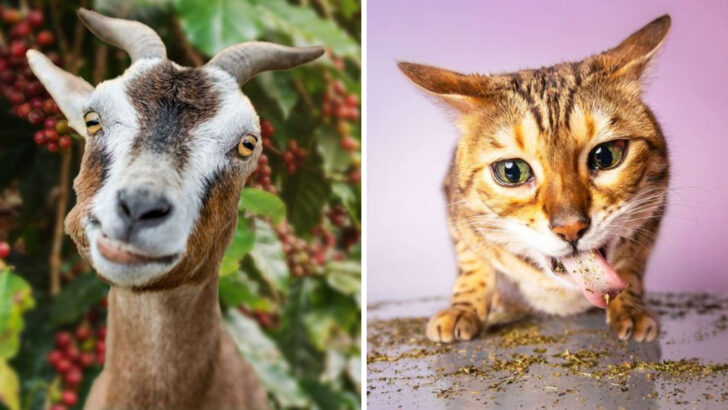Some animals get high—on purpose. And they’re not shy about it.
From elephants that raid fermenting fruit to jaguars tripping on jungle vines, nature has its own wild party scene. These creatures aren’t just stumbling into altered states—they seek them out. Again and again.
It’s not just about fun (though some of it really does look like fun). Sometimes it’s about survival. Other times? Pure curiosity. And in a few strange cases, it might even be boredom.
Whatever the reason, one thing’s clear: humans aren’t the only ones chasing a buzz. These 15 animals are living proof that getting high might just be part of the animal kingdom’s more… experimental side.
Dolphins
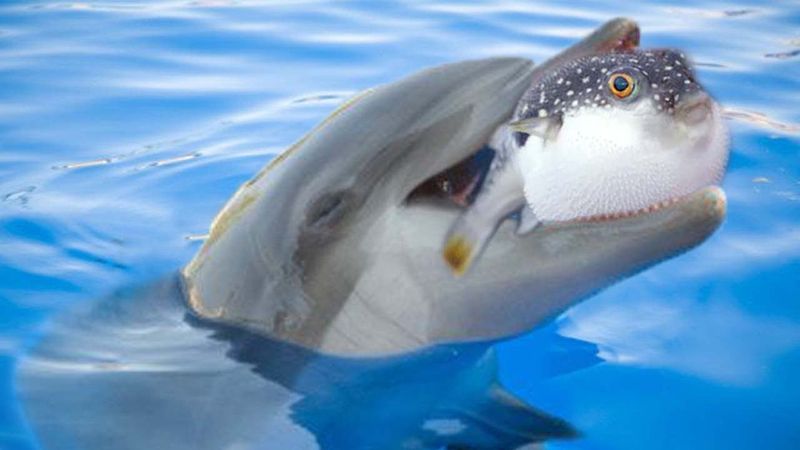
Dolphins are known for their intelligence and playful behavior. These marine mammals have been observed using pufferfish to get a high from the toxins. The pufferfish releases a neurotoxin that, in small doses, can have a narcotic effect. Dolphins seem to enjoy this sensation, passing the pufferfish among each other in a careful manner.
This behavior highlights the social nature of dolphins, as they engage in this activity together. It’s fascinating to see how they handle the pufferfish delicately, ensuring they don’t consume too much of the toxin.
The dolphins’ playful yet cautious approach showcases their understanding of the delicate balance between play and danger.
Elephants
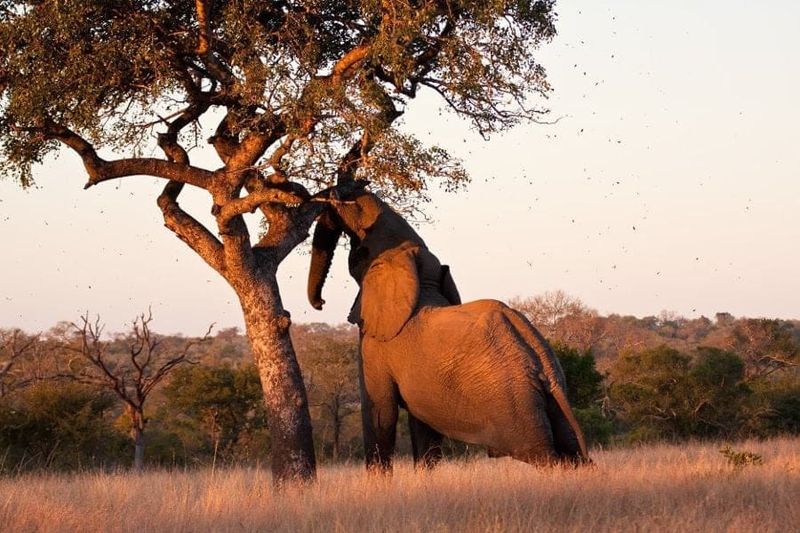
In the African savanna, elephants are known to indulge in the ripe fruits of the marula tree. The marula fruit ferments naturally as it ripens, producing alcohol. Elephants, with their keen sense of smell, are drawn to these fruits.
When consumed in large quantities, the fermented marula can have intoxicating effects on elephants. This leads to amusing antics and playful behaviors among these otherwise sober creatures.
Their love for marula fruits is well-documented and forms an essential part of their diet. The elephants’ attraction to these fruits demonstrates their keen intelligence and adaptability in finding nutritional rewards.
Wallabies
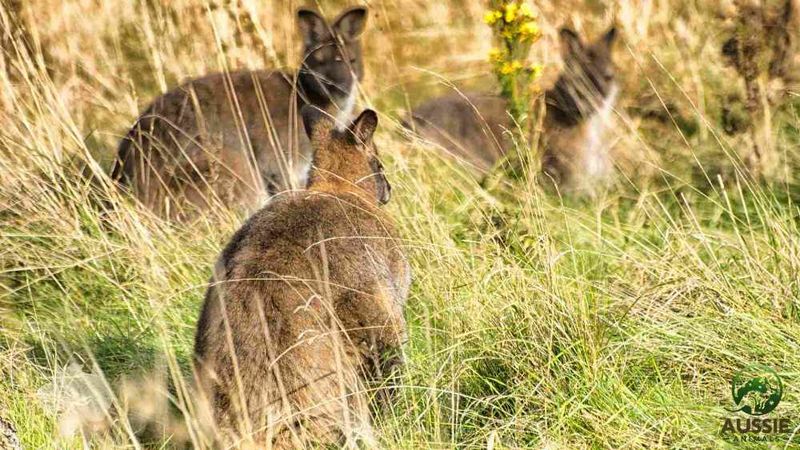
Wallabies in Tasmania have developed a taste for opium poppies, often causing havoc in poppy fields. These small marsupials become intoxicated after consuming the poppies, which contain opiates.
Farmers frequently find wallabies in their fields, hopping around in circles or lying down in a stupor. The wallabies’ interaction with poppy fields is a well-known phenomenon in the region.
This curious behavior highlights the wallabies’ opportunistic feeding habits and their ability to adapt to human-modified landscapes, even if it leads to some unintended consequences for themselves and the farmers.
Cats

Most cat owners are familiar with their feline’s love for catnip. This herb contains nepetalactone, a compound that triggers a euphoric reaction in cats. When exposed to catnip, cats often exhibit behaviors such as rolling, purring, and leaping in joy.
The effects of catnip are short-lived, usually lasting around 10 minutes, but provide a delightful spectacle for cat owners. Not all cats are affected by catnip, as sensitivity to it is hereditary.
Watching a cat enjoy catnip offers insights into their playful nature and brings a sense of joy and amusement to those who witness it.
Reindeer

Reindeer in the Arctic have been known to seek out Amanita muscaria mushrooms, a type of hallucinogenic fungus. The reindeer dig through the snow to find these mushrooms, consuming them for their psychoactive effects.
This unusual dietary choice is thought to be a way for reindeer to cope with the harsh conditions of their environment. The mushrooms are known to cause altered states of consciousness, and reindeer seem to enjoy the sensation.
The idea of reindeer getting high on mushrooms adds a whimsical twist to their image, showcasing their resourcefulness in the wild.
Chimpanzees
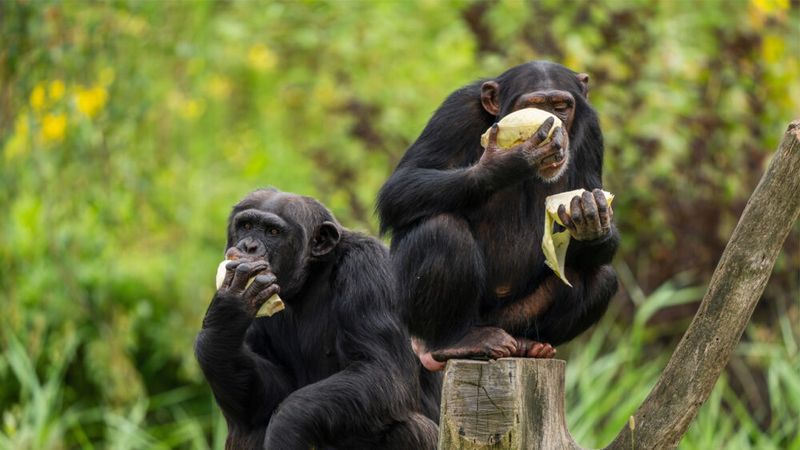
Chimpanzees in Africa have been observed consuming the roots of the Iboga plant, a known psychoactive substance. This plant contains alkaloids that produce hallucinogenic effects, altering the chimps’ perceptions.
The use of Iboga seems to be a deliberate choice by the chimpanzees, possibly for medicinal or social reasons. The chimps exhibit altered behaviors and social interactions after consumption.
The intriguing use of Iboga by chimpanzees highlights their complex understanding of natural resources and their willingness to experiment with different substances found in their environment.
Baboons
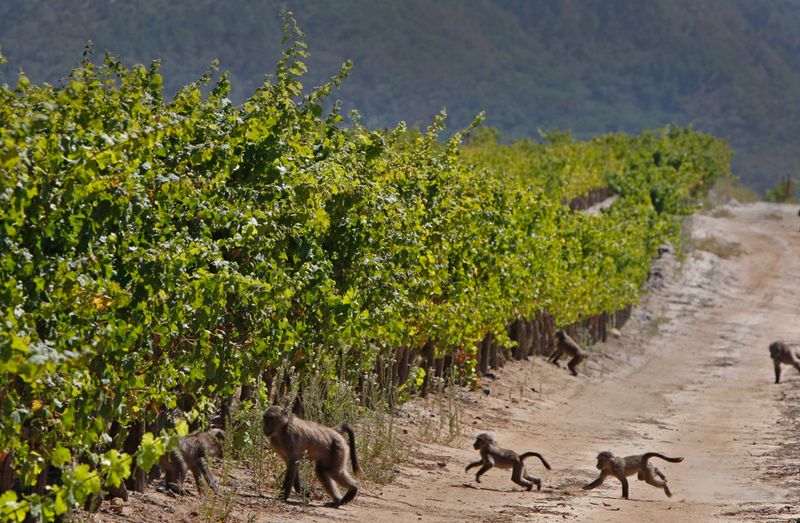
Baboons in South Africa are notorious for raiding vineyards to munch on grapes. These primates seem to have developed a taste for fermented grapes, which can intoxicate them.
Their bold foraging habits often lead to conflicts with farmers. The baboons’ love for grapes is not only a quest for food but also a pursuit of pleasure.
Their interactions with vineyards reflect their adaptability and resourcefulness in finding both sustenance and enjoyment, even if it occasionally leads to human-animal conflicts.
Cows
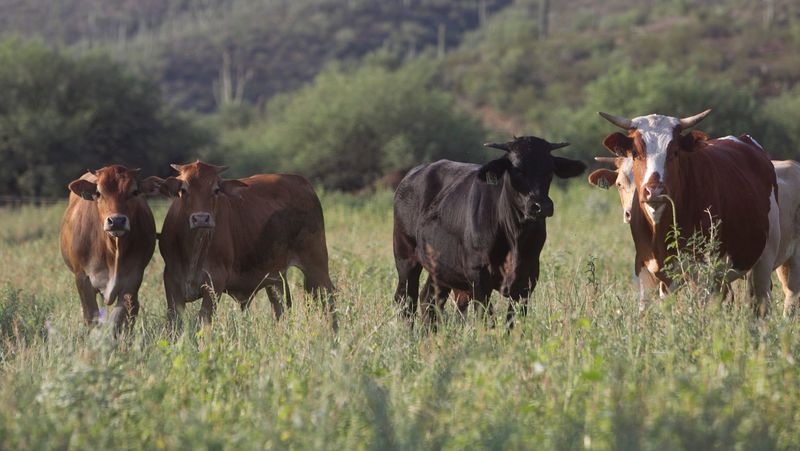
In the southwestern United States, cows grazing on locoweed can experience a narcotic effect. Locoweed contains toxic alkaloids that affect the central nervous system, leading to altered behaviors in cattle.
The effects can include staggering and erratic movements, earning the plant its name. Unfortunately, the cows’ attraction to locoweed can sometimes result in negative health impacts.
This behavior illustrates the unintended consequences of grazing on certain plants, highlighting the importance of understanding the interactions between livestock and native vegetation.
Raccoons
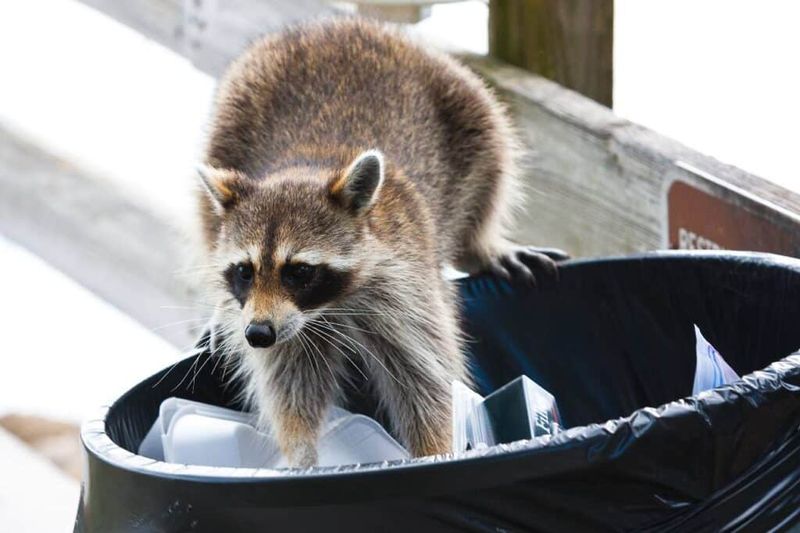
Raccoons are known for their curious and opportunistic nature. In suburban areas, they often rummage through trash cans and compost bins, sometimes encountering fermented food items.
These nocturnal adventures can lead to raccoons consuming alcohol-laden scraps, resulting in intoxication. Their clever antics while under the influence amuse onlookers.
Raccoons’ adaptability to urban environments showcases their resourcefulness, even if it leads to some comical situations. Their ability to thrive in diverse settings is a testament to their resilience and ingenuity.
Bears
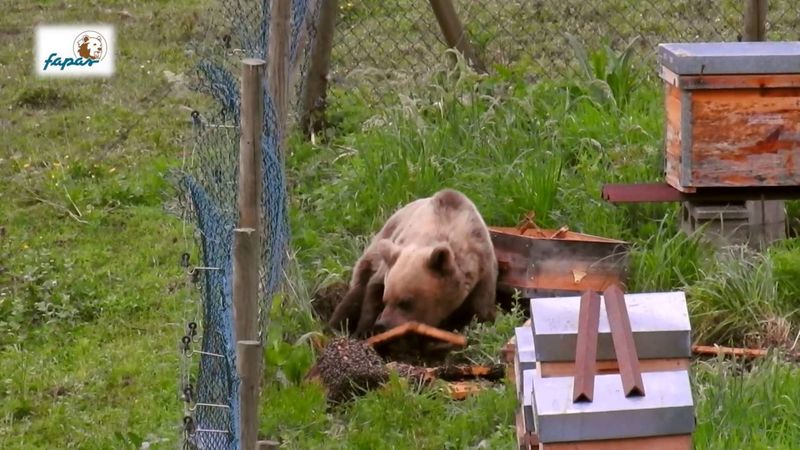
Bears have a well-documented love for honey, but when they stumble upon naturally fermented honey, the sugar content can turn alcoholic. This sweet treat can lead to intoxication.
While bears are primarily driven by their sweet tooth, the effects of fermented honey can alter their behavior temporarily. Observing a bear indulging in this makes for a fascinating sight.
Their pursuit of honey, fermented or not, highlights their strong foraging instincts and their ability to take risks for the sake of a sweet reward.
Bighorn Sheep

Bighorn sheep are drawn to mineral-rich rocks that contain psychoactive lichens. These lichens can have hallucinogenic effects when consumed in large quantities.
Their attraction to these rocks is believed to be a combination of seeking essential minerals and experiencing altered states. This behavior is a testament to their adaptability and survival instincts.
The sight of bighorn sheep engaging in this unique rock-licking behavior is both unusual and captivating, showing how wildlife interacts with their environment in unexpected ways.
Jaguars

In the Amazon, jaguars have been observed chewing on the Banisteriopsis vine, a key ingredient in the psychoactive brew ayahuasca. This behavior suggests that jaguars seek out the vine for its hallucinogenic effects.
While the exact reasons remain speculative, it’s thought that jaguars may use the vine to enhance their senses or for spiritual experiences. This intriguing behavior highlights the mysterious and enigmatic nature of these big cats.
The jaguars’ interaction with the Banisteriopsis vine adds a layer of mystique to their already fascinating existence in the dense rainforest.
Goats
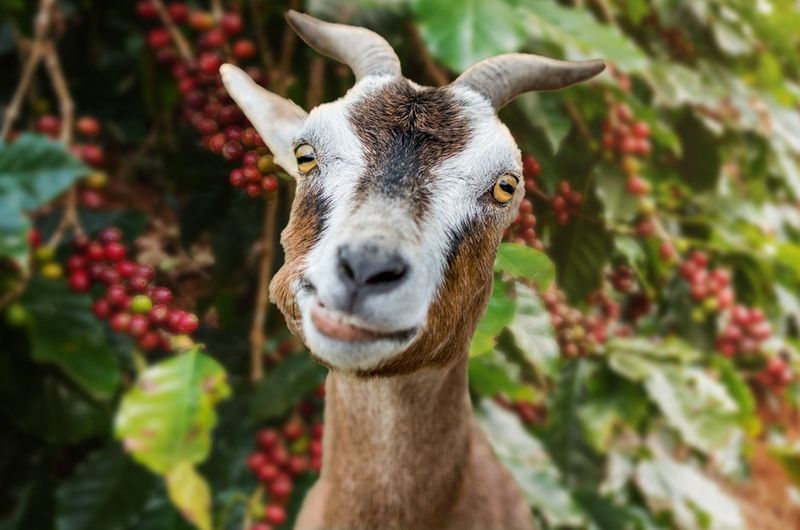
Goats in Ethiopia have a history of consuming coffee cherries, leading to a kind of caffeine-induced high. Legend has it, the discovery of coffee was linked to goats energetically frolicking after eating these cherries.
Their lively behavior after consumption highlights their playful and curious nature. The goats’ interaction with coffee plants is part of local folklore.
This behavior not only emphasizes their adventurous spirit but also connects them to a significant cultural and historical narrative regarding the origins of coffee.
Caterpillars
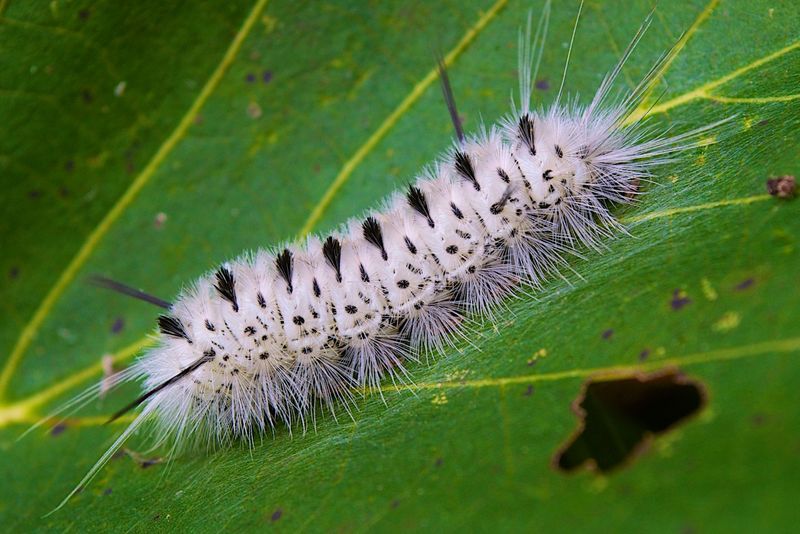
Certain caterpillar species in South America feed on coca leaves, which contain cocaine alkaloids. While humans cultivate coca for its stimulating properties, these caterpillars seem to enjoy the leaves for their own reasons.
The consumption of coca leaves leads to altered growth patterns and behaviors in these caterpillars. Their unique dietary choice is a fascinating aspect of their ecology.
This peculiar interaction between caterpillars and coca plants showcases the diverse ways in which animal species adapt to and utilize the resources available in their environment.
Tree Shrews
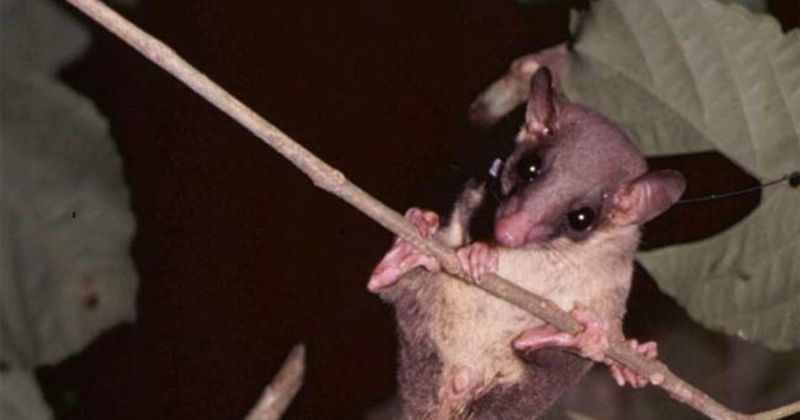
In the dense forests of Malaysia, tree shrews are known for their peculiar indulgence in fermented nectar. These tiny mammals frequent the buds of the Bertram palm, sipping on the naturally intoxicating brew that ferments within. Their visits are not merely accidental; tree shrews actively seek out these alcoholic treats.
One might wonder how these small creatures handle their liquor. Remarkably, they metabolize the alcohol without showing signs of intoxication. This unique adaptation allows them to enjoy their lush feast repeatedly.
Did you know? Tree shrews have the highest alcohol consumption among mammals relative to their body weight!

